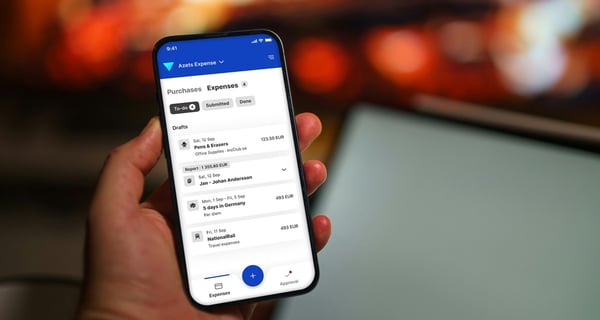

The company card is for many businesses, the preferred solution to handle their spending. But should it be?
Company cards often handle everything from day-to-day expenses and subscriptions to one-off expenses like events, travel, and entertainment. However, once a card transaction is complete, the steps following are seldom automated or optimised for staff managing these expenses.
According to law, companies must book all their spending correctly, along with related documentation (receipts, invoices, etc.), and this process is unfortunately often suboptimal, to say the least. It’s not uncommon for finance teams having to go through complicated processes with multiple systems that are both time-consuming and frustrating.
By automating expense management, the tedious manual processes of today are left for good. However, for expense management to be fully automated, we need one thing; high-quality data. The relevant data must be; on-time, rich and well-structured.
Data on-time
Together with Nordea and their OpenCard platform, we enable expense automation from company card transactions, in real-time, through sophisticated and secure API integrations.
Rich & Structured information
Thanks to the high-quality data generated in the collaboration, First Card transactions are automatically synchronised with your expense app. The expense application then converts the transactional data into an expense ready to be booked – thus automating the entire process.
Automated expenses in the real world
Let’s look at an example and consider the scenario of managing a subscription. More specifically, recurring transactions from Google Ads – a typical expense seen at marketing teams.
With the API integrations to the OpenCard platform
Managing these recurring transactions would look something like this:
- The card transaction automatically converts into an expense in real-time.
- The Marketing Manager is automatically notified and attaches the receipt to the expense.
- The finance team approves and sends the expense straight from the app into the accounting system.
All steps are made in one simple app across multiple teams. Now, let’s look at managing the same scenario but without any sophisticated API integration…
Without sophisticated API integrations
- The finance team signs in to their bank or company card account and collects transactional data.
- They manually input the transactional data and add the cost center “marketing” into the accounting system.
- They reach out to the responsible Marketing Manager to collect the receipts.
- The Marketing Manager collects all receipts from Google Ads and sends them (via email? chat? letter?) to the finance team.
- The finance team then matches and attaches the receipts manually to each transaction.
- And finally, they book the post manually in the accounting system.
The difference is pretty clear; without API integrations, the expense requires three to four systems and probably many hours to manage, compared to one simple system integrated with the OpenCard platform.
Findity investing in the company card experience
Our CEO has the word;
At Findity, we continue to invest in technology to drive the innovation of expense management forward. We are dialled in on streamlining the company card experience and believe that automated expense management should be accessible to all – regardless of which company card you use.
A great example is our collaboration with Nordea, where we pioneer in their OpenCard platform integrating and converting their card transactions into expenses – fully automating company spending for their customers.
 |
Patrick Olsson
CEO, Findity |
Want to learn more about Findity and the expense management platform?



